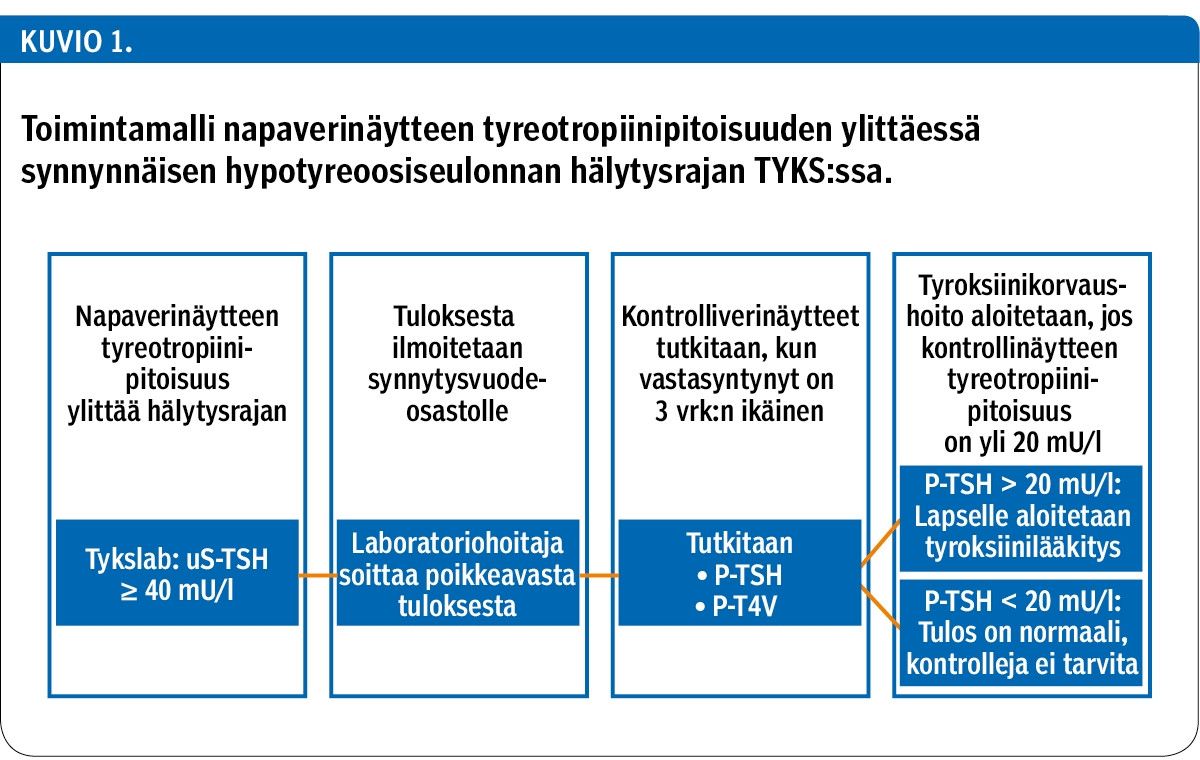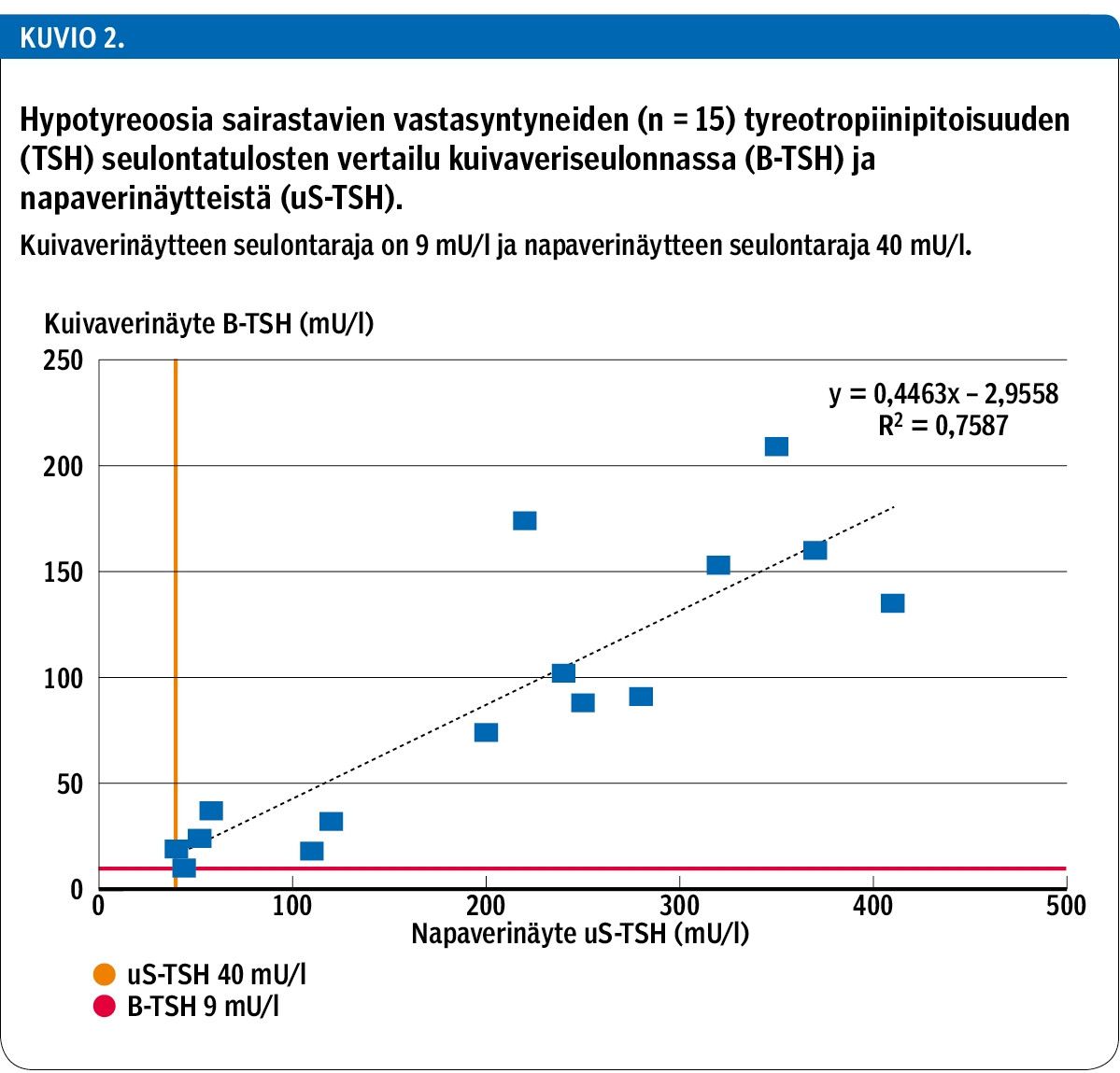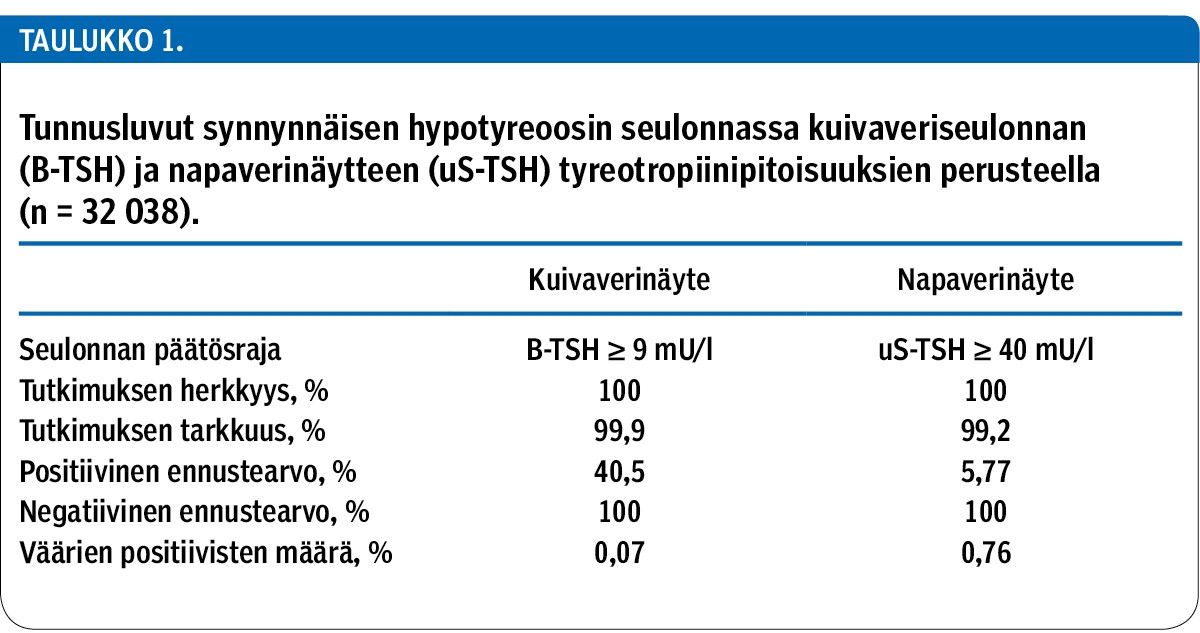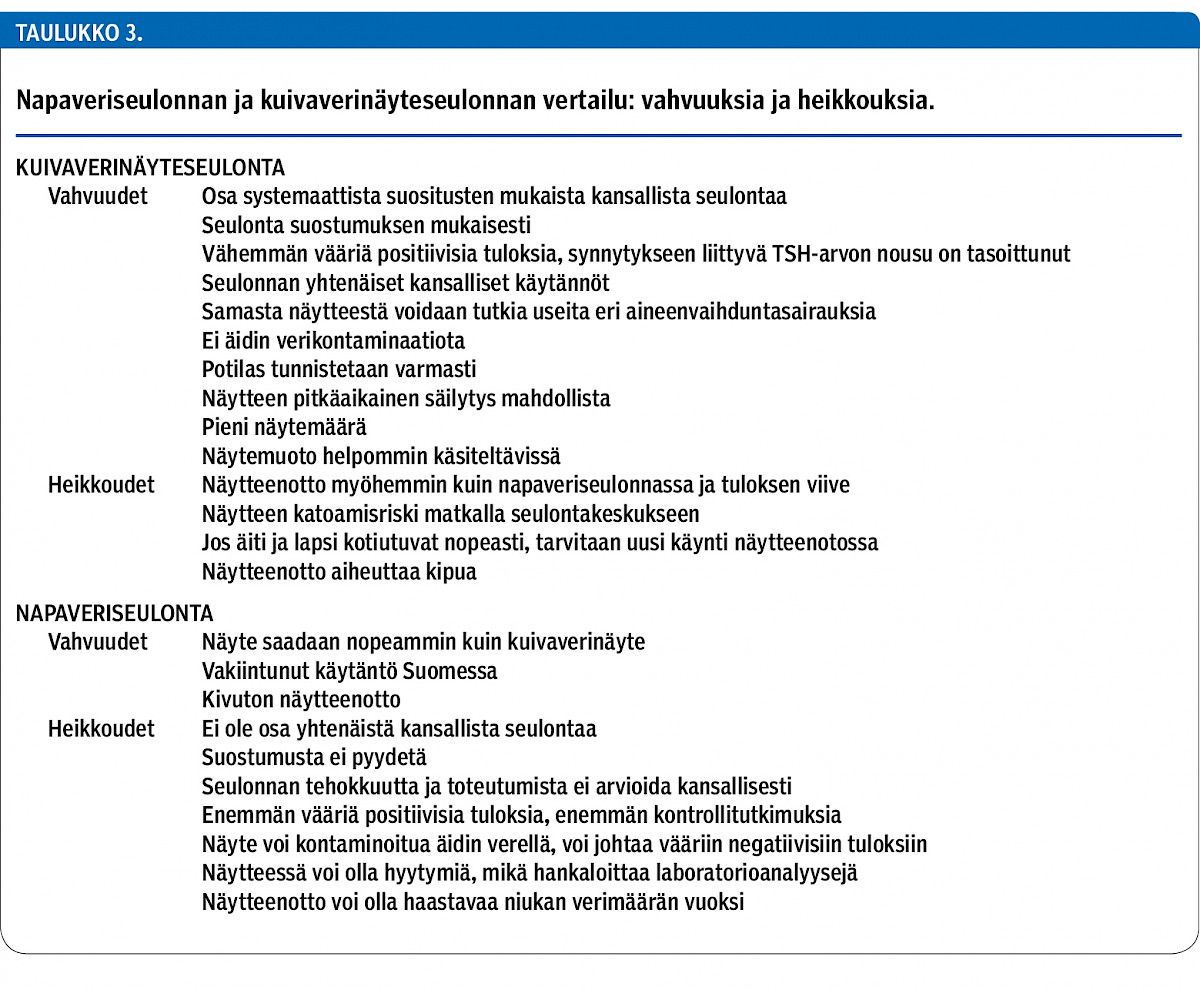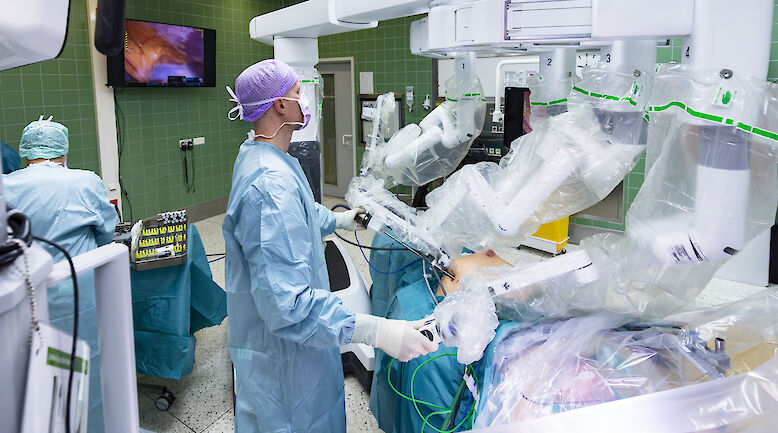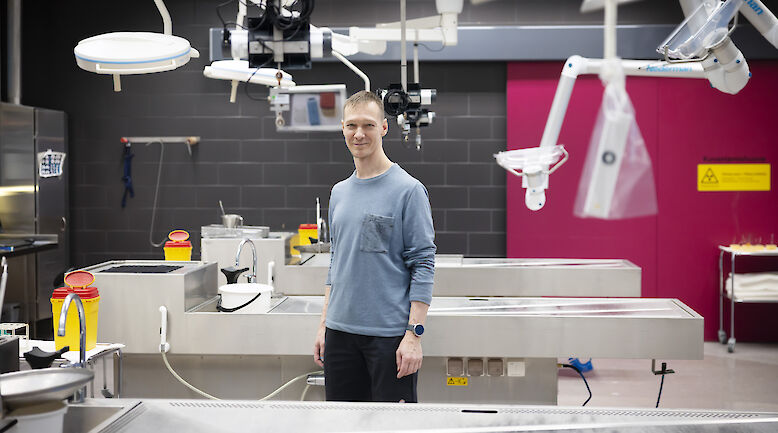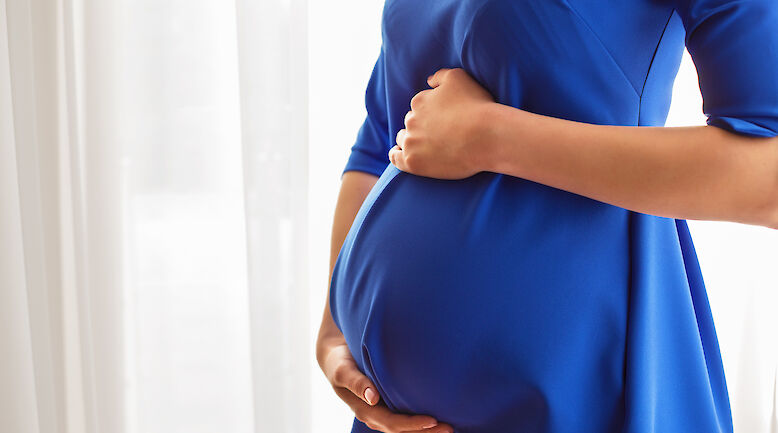Newborn screening for congenital hypothyroidism from dry blood spot samples and umbilical cord blood samples

Background
Newborn screening for congenital metabolic disorders has been performed in Western countries for decades. The screening is commonly done from dry blood spot samples acquired by heel prick. In Finland, newborns have been screened for congenital hypothyroidism from umbilical cord blood samples for over 30 years with excellent results. In other Western countries newborn screening for congenital hypothyroidism is performed from dry blood spot samples at 2−5 days of age as part of the wider screening programme for congenital metabolic disorders. Such a screening programme has recently also been established in Finland while the screening for congenital hypothyroidism from cord blood samples still continues.
Methods
In this study we evaluated the screening for congenital hypothyroidism from dry blood spot samples compared to umbilical cord blood samples in 32,038 Finnish newborns.
Results
The accuracy (99.9%) and the positive predictive value (40.5%) of screening for congenital hypothyroidism were better with dry blood spot samples compared to umbilical cord blood samples (99.2% and 5.77%, respectively). The number of false positive results was ten times higher in umbilical cord blood samples compared to dry blood spot samples. All children (n = 15) with congenital hypothyroidism included in the study were recognised by both screening methods.
Conclusions
The dry blood spot sample taken by heel prick at 2−5 days of age is an excellent method for screening for congenital hypothyroidism in newborns. This screening for congenital hypothyroidism using dry blood spot samples could be included in the screening programme for congenital metabolic disorders covering all newborns in Finland.
